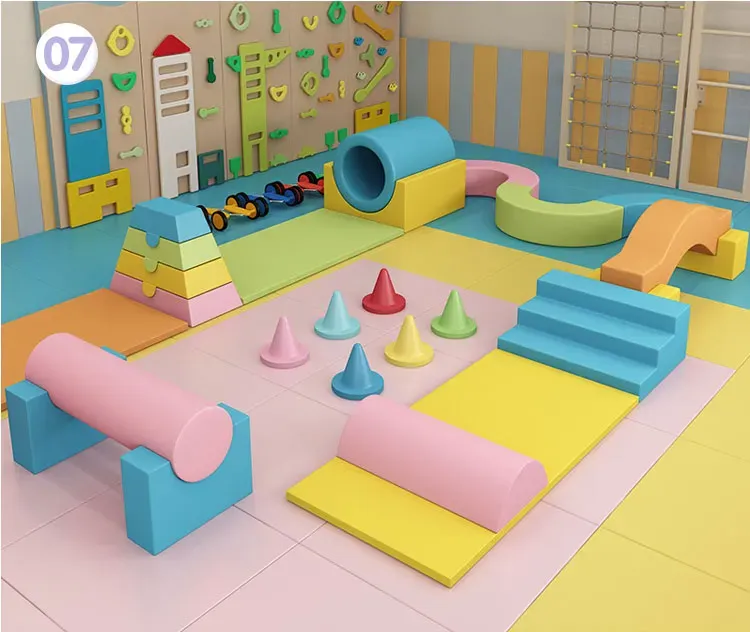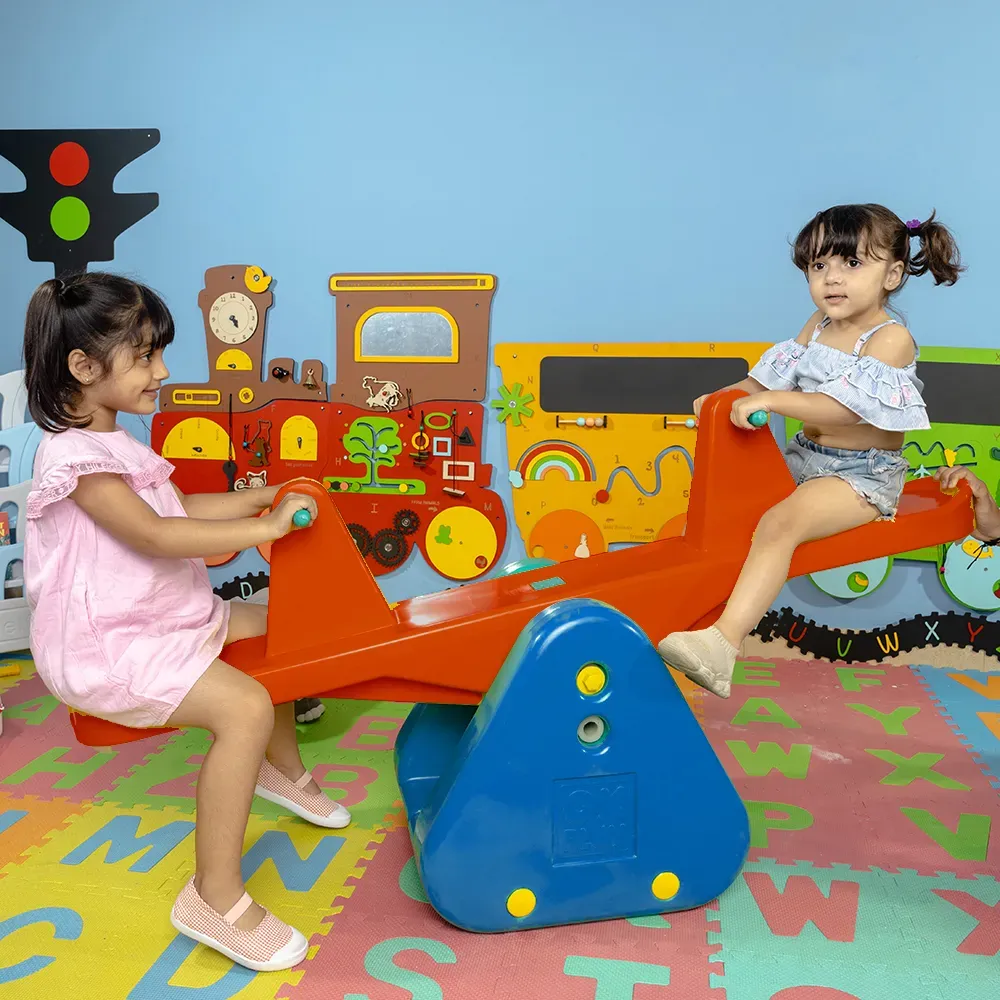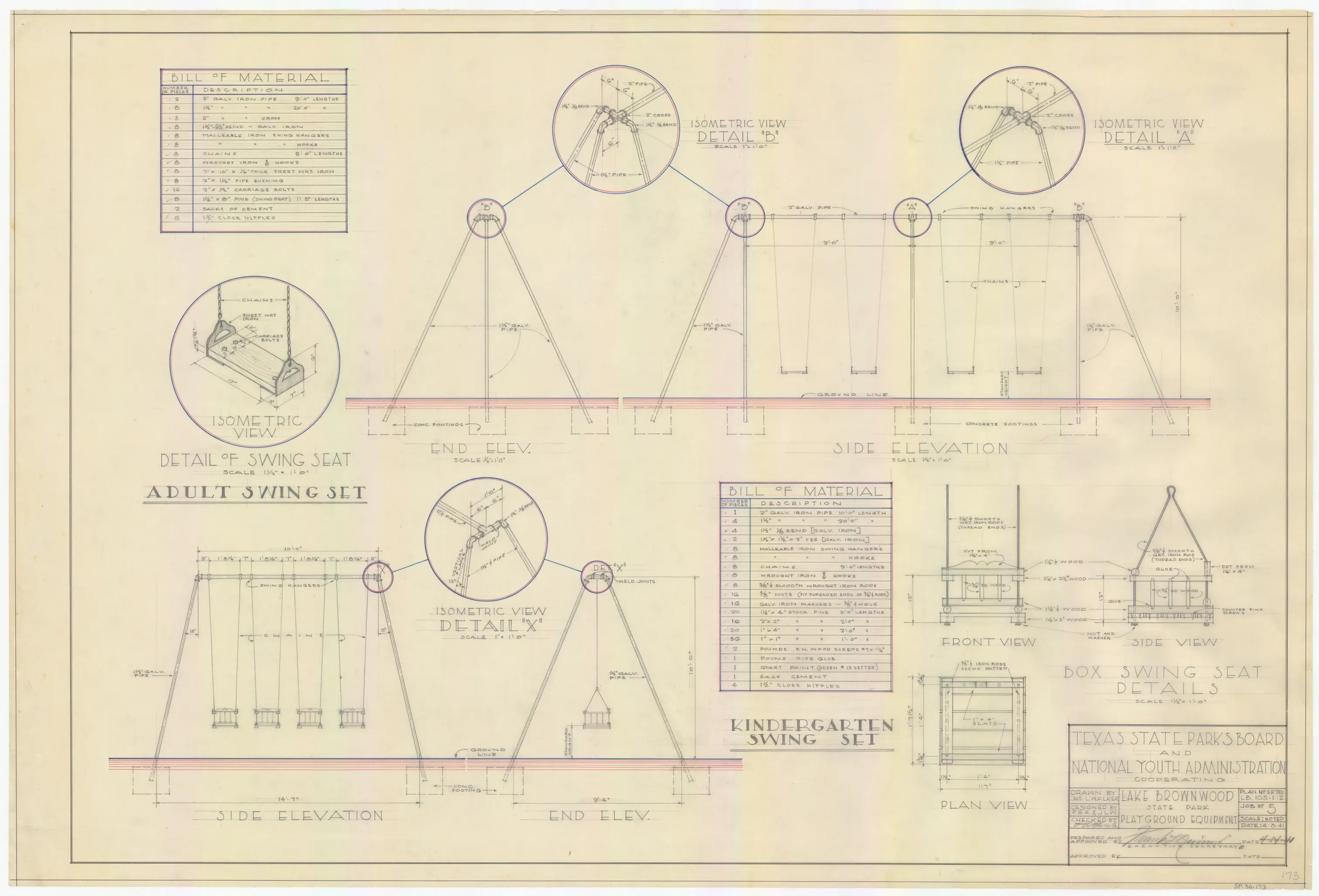Table of Contents
Let's be real. Sometimes the weather outside is less than ideal for letting little ones run wild. Rain pouring down, snow piling up, or maybe it's just too darn hot. But kids still need to move, explore, and burn off that boundless energy. Just locking them down with tablets isn't exactly fostering future innovators, is it? This is precisely where thoughtful selection of **indoor play equipment for kindergarten** becomes less of a luxury and more of a necessity.
Why Indoor Play Equipment is NonNegotiable for Kindergarten Development

Why Indoor Play Equipment is NonNegotiable for Kindergarten Development
Movement is the Foundation, Not an Afterthought
Let's get one thing straight: kindergarten isn't just about sitting still and learning your ABCs. Those little bodies are wired for motion. Deprive them of it, and you're essentially asking a bird not to fly. This is precisely **Why Indoor Play Equipment is NonNegotiable for Kindergarten Development**. It's not just recess filler; it's fundamental to physical development. Think about it: climbing strengthens muscles, balancing improves coordination, and sliding builds spatial awareness. These aren't optional extras; they are the building blocks for everything from holding a pencil correctly to navigating a crowded room without tripping.
Ignoring the need for robust physical activity during these formative years is like trying to build a house without a foundation. Sure, you might get the walls up, but it's going to be shaky. Indoor play equipment provides a controlled, safe environment for kids to push their physical boundaries, test their limits, and develop confidence in their own bodies. It's where they figure out how high they can reach, how fast they can go, and how to land without scraping a knee (most of the time).
Beyond Just Burning Energy: Brain and Social Gains
While the physical benefits are obvious, the impact of quality indoor play equipment stretches far into cognitive and social-emotional realms. When kids navigate a climbing structure, they're not just using muscles; they're problem-solving. They're figuring out the best route, anticipating obstacles, and planning their movements. That's executive function development in action. Dramatic play areas, often part of indoor setups, are breeding grounds for imagination, language development, and understanding social roles. Watching kids negotiate who gets to be the 'parent' and who's the 'baby' in a play kitchen is a masterclass in social learning.
These interactions, whether it's collaborating to move a large soft block or waiting patiently for a turn on the slide, teach critical social skills like sharing, cooperation, and conflict resolution. Kids learn to read social cues and manage their emotions in real-time, messy, playground scenarios. You can talk about teamwork all day, but actually *doing* it while trying to build a block tower together is a far more potent lesson. It’s the difference between reading a recipe and actually baking the cake.
So, what kind of development are we talking about?
- Gross Motor Skills (climbing, balancing, jumping)
- Fine Motor Skills (manipulating smaller play pieces)
- Spatial Awareness and Proprioception
- Problem-Solving and Planning
- Language Development (through imaginative play)
- Social Skills (sharing, cooperation, conflict resolution)
- Emotional Regulation (managing frustration, excitement)
Choosing Safe and Durable Indoor Play Equipment for Kindergarten

Choosing Safe and Durable Indoor Play Equipment for Kindergarten
Alright, so you're convinced indoor play isn't just kids running in circles. Great. Now comes the part that makes some folks sweat: picking the actual gear. This is where you need to put on your detective hat because when it comes to **Choosing Safe and Durable Indoor Play Equipment for Kindergarten**, cutting corners isn't an option. We're talking about items that will be climbed on, jumped off, crashed into, and generally subjected to the kind of enthusiastic chaos only a room full of five-year-olds can generate. Cheap, flimsy stuff isn't just a waste of money; it's a hazard waiting to happen. You need equipment built like a tank, made from non-toxic materials that meet stringent safety standards – think ASTM or CPSC guidelines, not just whatever looks colorful online. Checking for pinch points, sharp edges, and overall structural integrity before anything gets installed is non-negotiable. It's the difference between a space that fosters joyful exploration and one that requires constant injury reports.
Practical Considerations for Installing Kindergarten Indoor Play Areas

Practical Considerations for Installing Kindergarten Indoor Play Areas
Mapping Out Your Play Universe: Space and Layout
you've got the shiny, sturdy equipment. Now where the heck does it go? Thinking about **Practical Considerations for Installing Kindergarten Indoor Play Areas** starts with staring blankly at your available square footage. It’s not just about cramming stuff in; you need to consider flow, supervision sightlines, and safety zones around each piece. Imagine a bunch of toddlers and preschoolers trying to navigate a jungle gym with no clear path – chaos, pure and simple. You need enough space for kids to climb, jump, and run without constantly colliding or tripping over equipment edges. This means understanding the footprint of each item, plus the required safety clearance around it.
Think about how different pieces will be used together. Does the climbing structure lead into the slide? Is there a quiet corner for soft play blocks away from the main thoroughfare? Poor layout doesn't just look messy; it creates bottlenecks and increases the risk of bumps and falls. Getting this right upfront saves headaches (and potential insurance claims) down the line. Sometimes, a simple diagram or even taping out the layout on the floor helps visualize the space before anything heavy gets moved.
Ground Control: Flooring and Safety Surfaces
Once you know *where* things are going, you need to think about *what's underneath* them. Concrete floors are great for parking cars, terrible for tumbling children. Choosing the right safety surfacing is a critical **Practical Consideration for Installing Kindergarten Indoor Play Areas**. Hardwood floors might look nice, but they offer zero impact absorption when a kid inevitably takes a header off the low climbing wall. You need something forgiving.
Options range from interlocking foam tiles to rubber mats or poured-in-place rubber surfacing. Each has pros and cons regarding cost, durability, and impact absorption ratings (yes, that's a thing, look for critical fall height ratings). The goal is to minimize injuries from falls, because falls *will* happen. Don't skimp here. That extra few dollars per square foot is a lot cheaper than a trip to the emergency room. Plus, good flooring can also help with acoustics, which is a minor miracle in a room full of yelling kids.
Here’s a quick checklist for your indoor play area installation:
- Measure your space accurately.
- Sketch out different layout options.
- Consider traffic flow and activity zones.
- Verify safety clearance requirements for *each* piece of equipment.
- Select appropriate safety surfacing based on fall height ratings.
- Check for proper lighting and ventilation.
- Ensure clear sightlines for adult supervision.
- Plan for storage of loose play items.
Making the Case for Investing in Quality Indoor Play Equipment

Making the Case for Investing in Quality Indoor Play Equipment
Why Cheap Isn't Cheaper in the Long Run
Let's talk budgets. Everyone's got one, and usually, it feels tighter than a drum. It's tempting to look at the price tag on high-quality **indoor play equipment for kindergarten** and recoil, then eye the cheaper, less robust options. But here's the hard truth: that bargain-basement stuff is a false economy. It wears out faster, pieces break, the colors fade, and frankly, it just doesn't hold up to the relentless energy of small children. You'll end up replacing it sooner, spending more over time, and dealing with the hassle of repairs or disposal.
Investing in quality equipment from the start means you're getting something built to last. It's constructed with better materials, designed with longevity in mind, and typically comes with warranties that aren't worth the paper they're printed on with the cheap stuff. Think of it like buying good tools versus disposable ones. One gets the job done reliably for years; the other snaps on the first tough screw. Your indoor play space deserves tools that won't fail.
The ROI Goes Beyond Dollars and Cents
so quality lasts longer. That's part of the financial argument. But the return on investment (ROI) for excellent **indoor play equipment for kindergarten** stretches far beyond simple replacement costs. This equipment isn't just furniture; it's a critical teaching tool. It directly impacts child development, fostering physical literacy, cognitive skills, and social competence. Children who have access to rich, stimulating play environments are better prepared for academic learning, exhibiting improved focus, problem-solving abilities, and self-regulation.
Consider the ripple effect. Engaged, developing children lead to happier classrooms and more satisfied parents. Your facility becomes known as a place where children thrive, not just survive a rainy afternoon. This intangible value – the positive impact on young lives and the reputation it builds for your program – is difficult to quantify in a spreadsheet, but it's arguably the most valuable return you get.
What are you really buying?
- Durability and Longevity
- Reduced Maintenance and Repair Costs
- Enhanced Child Development Outcomes
- Improved Facility Reputation
- Increased Enrollment Appeal
- Greater Safety and Reduced Risk
Attracting and Retaining Families
In a competitive landscape, what makes your kindergarten stand out? While curriculum and staff are paramount, the physical environment plays a significant role in a parent's decision. A vibrant, safe, and well-equipped indoor play area isn't just a perk; it's a major selling point. Parents are increasingly aware of the importance of physical activity and play for their child's overall well-being. Seeing a dedicated, high-quality space for indoor exploration signals that your program prioritizes holistic development, not just academics.
Think about it from a parent's perspective. They envision their child happy, active, and safe, even when they can't go outside. A tired-looking, sparse indoor area doesn't inspire confidence. A dynamic space filled with engaging, safe equipment does. It's an investment in your facility's appeal and a clear demonstration of your commitment to providing the best possible environment for the children in your care. It helps you attract the families you want and keeps them coming back year after year.
Making the Indoor Play Investment Count
So, we've covered the basics: why letting kids bounce off walls inside is actually good for them, how to spot equipment that won't fall apart after a week (or worse, cause an incident report), and the logistical gymnastics of getting it all set up. Choosing the right indoor play equipment for kindergarten isn't just about buying stuff; it's about deliberately shaping an environment that supports growth, creativity, and maybe, just maybe, gives educators a slightly less chaotic day. It's an investment in developing capable, confident kids who can navigate the world, starting with the padded jungle gym. Get it right, and the payoff is clear.